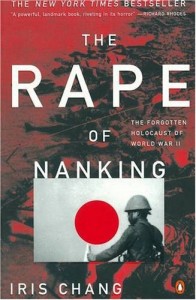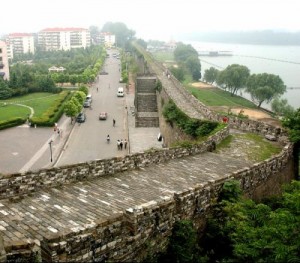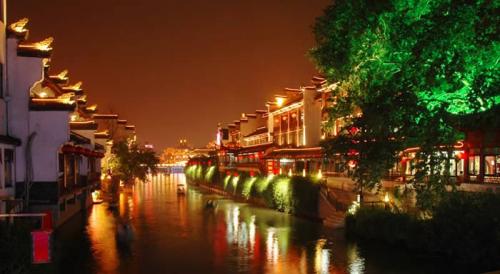Surrounded by an impressive Ming dynasty city wall, Nanjing is one of China’s most attractive and livable cities, offering plenty of historical sites and other tourist attractions and activities. Depending on what kind of train you take, you can get to Nanjing from Shanghai in roughly 3 hours or so.
Known as the capital city of six or ten dynasties in ancient Chinese history, Nanjing has a brilliant cultural heritage.
Famous in China as a university city—home to Nanjing University among many others—Nanjing does have a certain university town vibe to it, despite having a population of over 5 million. And while that means that traffic and crowds are an unavoidable part of life in Nanjing, it’s easy enough to find solace in one of the city’s many pleasant parks.
Nanjing (“Southern Capital”)—benefiting from its proximity to Shanghai and position on the Yangtze River—is a prosperous city with wide boulevards lined with stately trees and balconied houses.
Also known as “Nanking” in the West, the city is best known in the West for the infamous Rape of Nanking during the Japanese occupation in 1937. Although it’s not for the faint at heart, I definitely recommend checking out the Nanjing Massacre Memorial, which includes document the brutal rapes, burning and slaughter of an estimated 300,000 Chinese civilians.

As one of China’s “three furnaces” (the other two being Wuhan and Chongqing), Nanjing should be avoided during the notoriously hot and sticky summers. If possible, go during the fall when the city is particularly attractive.
More Info & History
The history of Nanjing goes way back to the 5th century BC, during the beginning of the so-called Warring States Period (403-221BC). The former capital of six dynasties, Nanjing was capital of Southern dynasties between the 3rd and 6th centuries AD, before eventually moving north to Xi’an.
As an important administrative capital for so many years, Nanjing offers a lot for history buffs—certainly a lot more sites of historical importance than Shanghai.
In addition to a bunch of traditional monuments, gates and tombs (including Sun Yat-Sen’s tomb in Nanjing’s famous Purple Mountain), Nanjing’s most visible and most impressive is the colossal Ming Dynasty sections of the city wall, which were built during the 14th century to surround and protect city.
Nanjing briefly resumed status as official capital after World War II….only to be abandoned by the Commies four years later in favor for the more conservative Beijing.



